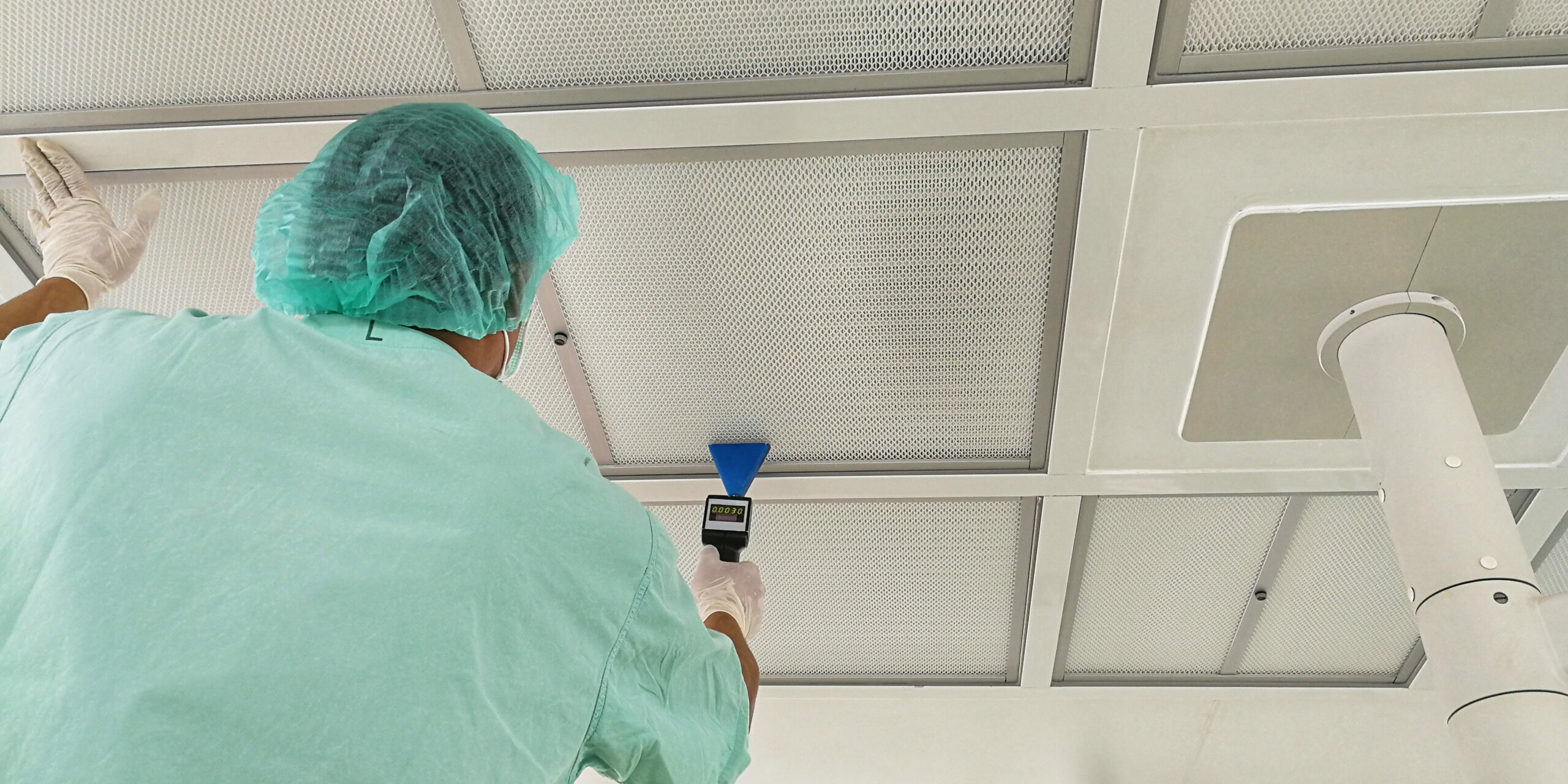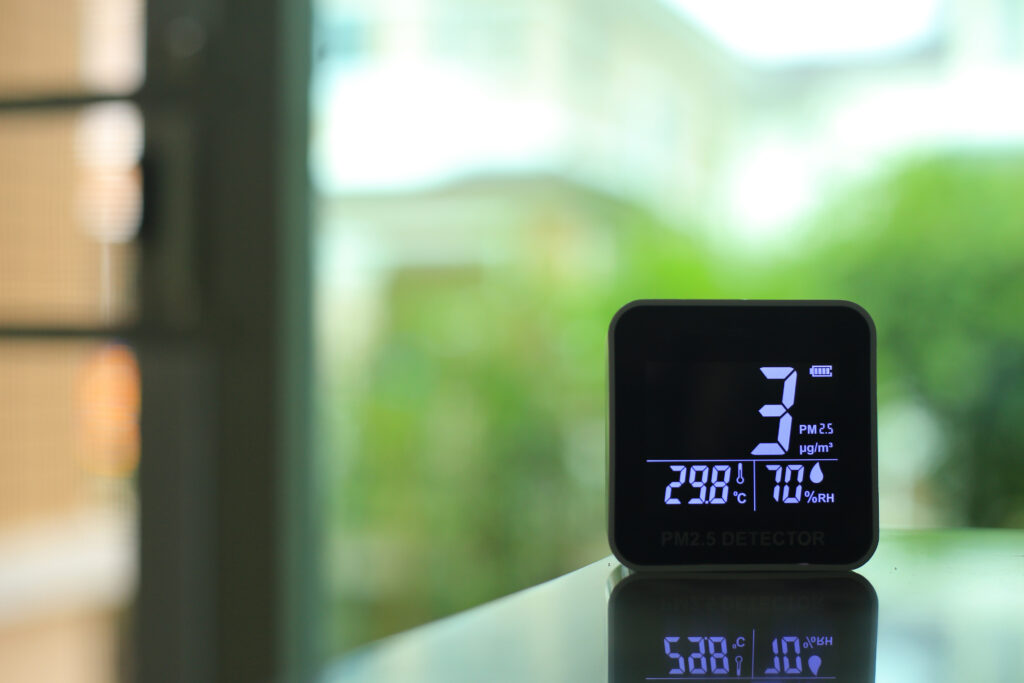Smart Buildings Blog
The latest on all things commercial building automation, energy management, and IoT
The Importance of Indoor Air Quality (IAQ)

IAQ stands for Indoor Air Quality, which refers to the air quality inside buildings, including homes, offices, schools, and other indoor environments. IAQ is crucial because people spend a significant amount of time indoors, and their air quality can directly impact their health, comfort, and well-being.
Benefits of good IAQ for employees and customers include:
- Health and Well-being: Good IAQ promotes a healthy indoor environment by reducing pollutants and contaminants. Improved IAQ helps minimize respiratory issues, allergies, asthma, and other health conditions related to poor air quality. It leads to better overall health, comfort, and productivity for employees and provides a positive customer experience.
- Enhanced Cognitive Performance: High-quality indoor air improves cognitive function and decision-making abilities. Employers can create an environment that supports optimal cognitive performance, concentration, and employee productivity by providing good indoor air quality. In commercial spaces, such as retail stores or hospitality establishments, customers may experience improved comfort and focus, leading to a more positive experience.
- Comfort and Satisfaction: Good IAQ contributes to employees’ and customers’ comfort and satisfaction. Fresh, clean air promotes a pleasant atmosphere, reduces odors, and maintains a suitable temperature and humidity level. When people feel comfortable in indoor environments, it positively impacts their overall experience, job satisfaction, and willingness to spend time or purchase in commercial settings.
- Reduced Sick Leave and Absenteeism: Poor IAQ can lead to an increased prevalence of illnesses, resulting in higher rates of sick leave and absenteeism among employees. Conversely, good IAQ reduces the chances of respiratory issues and other health problems, leading to decreased sick leave and improved attendance. It helps organizations maintain productivity and minimize disruptions.
- Brand Reputation and Customer Loyalty: Providing a healthy and comfortable indoor environment through good IAQ demonstrates a commitment to employee well-being and customer satisfaction. Good indoor air quality can enhance the reputation of a business and contribute to positive word-of-mouth recommendations and customer loyalty. Customers are more likely to frequent establishments that prioritize their health and comfort.

Source: iStock
Various IAQ devices and equipment are available to improve and maintain indoor air quality in different settings. Here are some common examples:
- Air Purifiers: Air purifiers, also known as air cleaners or air filtration systems, remove contaminants from the air. They typically use filters, such as High-Efficiency Particulate Air (HEPA) filters, activated carbon filters, or electrostatic precipitators, to trap and remove particles, allergens, dust, pet dander, smoke, and other airborne pollutants. Some air purifiers may also have UV germicidal lamps or photocatalytic oxidation technology to neutralize bacteria, viruses, and volatile organic compounds (VOCs).
- Ventilation Systems: Ventilation systems are crucial in maintaining good IAQ by bringing fresh outdoor air into the building and removing stale indoor air. Mechanical ventilation systems, such as central air handling units, exhaust fans, or energy recovery ventilators (ERVs), help control moisture levels, dilute pollutants, and provide adequate air exchange. Proper ventilation also helps reduce the concentration of indoor air contaminants and improve overall air circulation.
- Humidifiers and Dehumidifiers: Humidifiers add moisture to the air when it is too dry, especially during winter or in arid climates. Maintaining appropriate humidity levels can help prevent dryness, respiratory discomfort, and static electricity issues. On the other hand, dehumidifiers remove excess moisture from the air, which is beneficial in humid environments or areas prone to moisture-related problems like mold and mildew growth.
- Carbon Dioxide (CO2) Monitors: CO2 monitors or sensors measure the level of carbon dioxide in the air. Elevated CO2 levels can indicate inadequate ventilation or occupancy levels, which may lead to poor IAQ and discomfort. CO2 monitors can help assess and regulate ventilation rates to maintain optimal air quality.
- Gas Detectors: Gas detectors identify and monitor specific gasses or volatile chemicals in indoor environments. For example, carbon monoxide (CO) detectors can alert occupants to this odorless, colorless, potentially dangerous gas. Other gas detectors may target specific pollutants like formaldehyde, radon, or VOCs, depending on the particular requirements of the building or industry.
- IAQ Sensors and Monitoring Systems: IAQ sensors and monitoring systems measure various parameters, including temperature, humidity, particulate matter, VOCs, and other contaminants in the air. These devices provide real-time data on IAQ parameters, allowing for continuous monitoring and analysis. IAQ monitoring systems can help identify issues, track trends, and trigger alerts or control actions to maintain optimal IAQ conditions.
It’s important to note that the specific devices or equipment required for a particular building will depend on factors such as the size of the space, the nature of contaminants, the HVAC system in place, and the specific IAQ goals. Consulting with HVAC professionals, IAQ experts, or building engineers can help determine the most suitable IAQ devices and equipment for a given setting.
IAQ devices can be paired with an EMS (Energy Management System) or BAS (Building Automation System) to enhance the overall control and monitoring of indoor air quality within a building. EMS or BAS systems are designed to automate and optimize various building systems, including HVAC, lighting, security, and IAQ.
Integrating IAQ devices with an EMS/BAS enables comprehensive IAQ management and optimization, providing a more intelligent and efficient approach to maintaining healthy indoor air quality in buildings.
In summary, ensuring good IAQ in buildings offers numerous benefits to employees and customers. It promotes a healthy and comfortable indoor environment, improves cognitive performance, reduces health issues, enhances job satisfaction, and contributes to a positive brand image and customer loyalty. Prioritizing IAQ is a win-win situation for the people occupying the space and the business or organization operating within it.
Let FSG Smart Buildings help you with your indoor air quality. Contact us and find out how we can deliver success for your organization today.
Interested in building automation and helping customers build smarter buildings? Come work for us! FSG Smart Buildings is hiring talented people looking for a great career in building automation.
More from the Blog

What are the Benefits of Utilizing Lighting Controls?
What are the Benefits of Utilizing Lighting Controls?
Lighting control refers to the technology and systems used to regulate and manage artificial lighting in various environments. It involves…

Benefits of EMS & BAS in a Quick Serve Restaurant
Benefits of EMS & BAS in a Quick Serve Restaurant
An EMS/BAS (Energy Management System/Building Automation System) can be installed in a quick service restaurant (QSR) to monitor and control…

The Benefits of EMS/BAS in a Convenience Store
The Benefits of EMS/BAS in a Convenience Store
The adoption of Building Automation Systems (BAS) or Energy Management Systems (EMS) technology in convenience stores can vary depending on…
